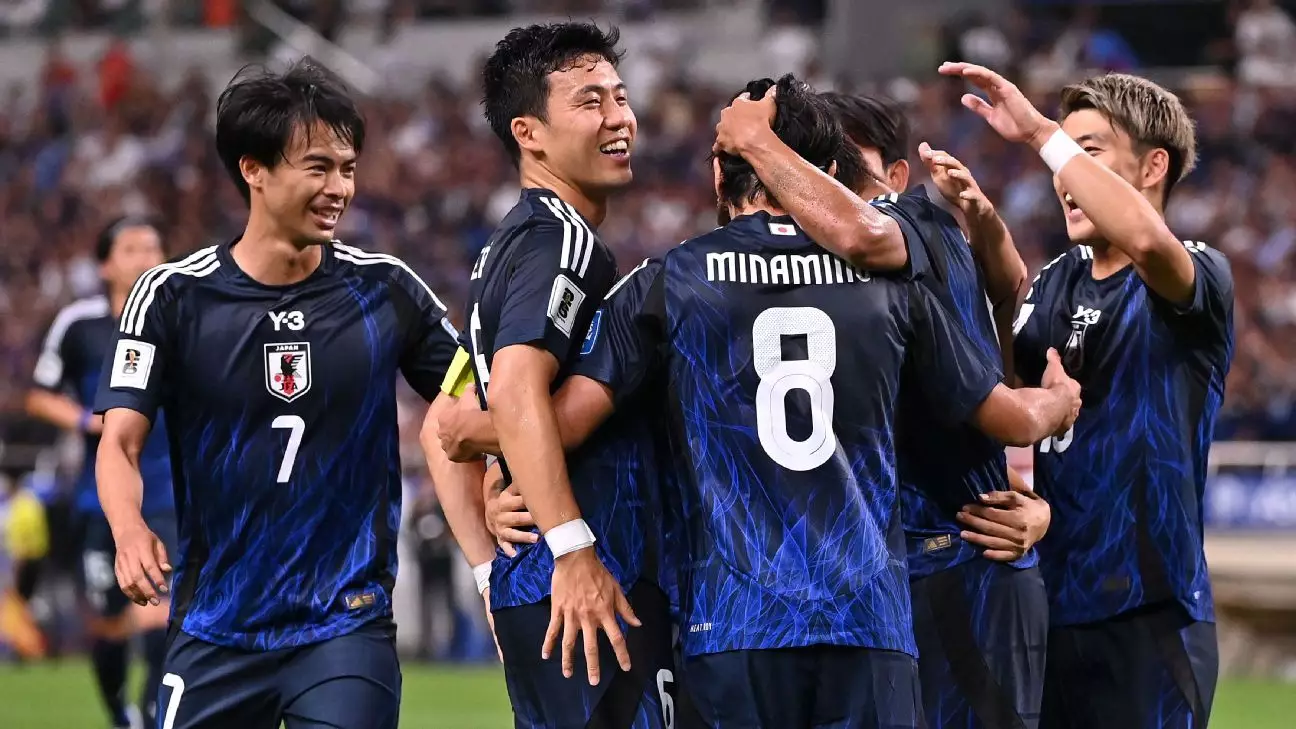Japan showcased an impressive attacking display in the third round of the Asian qualifiers for the 2026 FIFA World Cup. Coach Hajime Moriyasu introduced a new system, the 3-4-2-1 formation, which allowed the team to utilize their attacking talent effectively. The deployment of three central defenders and two central midfielders was conventional, but the inclusion of wing-backs Kaoru Mitoma and Ritsu Doan added a new dimension to Japan’s attacking strategy. These changes enabled Japan to dominate China and secure a resounding 7-0 victory.
Moriyasu’s decision to field both Doan and Takefusa Kubo in the starting lineup showcased his ability to make the best use of his talented players. While Doan operated as the right wing-back, Kubo played a withdrawn attacking role behind the main striker. Their seamless interchangeability on the field created confusion for the Chinese defense, leading to Japan’s relentless attacks down the right flank. The partnership between Doan and Premier League star Mitoma on the right side was particularly lethal, as they constantly threatened the opposition with their technical abilities and pace.
Japan’s victory over China highlighted their dominance on the field, but it also showcased the team’s depth and versatility. Players like Takumi Minamino, who scored two goals in quick succession, and Daichi Kamada and Takuma Asano, who were left on the bench, demonstrated the abundance of talent at Moriyasu’s disposal. The team’s ability to maintain intensity throughout the game, even after sealing the result, exemplified their determination and hunger for success. Young prospect Kota Takai was even given a chance to earn his first cap, showing Japan’s commitment to nurturing new talent.
While the victory over China was impressive, Japan must now focus on their upcoming match against Bahrain. The team’s ability to rotate players effectively and maintain their performance level will be crucial in securing future victories. Moriyasu’s innovative tactics and the team’s cohesive play suggest that Japan may have finally discovered the formula to unleash their full potential. As they aim to qualify for the 2026 FIFA World Cup, Japan’s new attacking system and talented roster may prove to be the key to their success on the international stage.

Leave a Reply